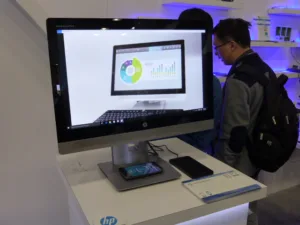Wireless Power remains a topic that many are interested in, and the technology is increasingly spreading. Increasing numbers of smartphones support the Wireless Power Consortium’s (WPC) Qi standard, which is based on inductive technology and is by far the most wide-spread consumer-facing wireless power standard (Qi Will Maintain Lead in Wireless Power). The other common technologies are Rezence (resonant technology) and Powermat/PMA (inductive); both are under the purview of the newly-formed Airfuel Alliance.
Awareness is up amongst consumers, according to a speaker at the recent Wireless Power World event, in Beijing in September. 76% of consumers are now aware of wireless power, for three main reasons: the Galaxy S6 smartphone, Apple Watch and Ikea’s furniture with Qi charging pads.
Qi is now seeing increasing adoption from car makers. Around 28 cars, from companies including Audi, Jeep, Toyota and BMW, have Qi available as an option. The WPC is aware that this represents a significant commitment on the part of the car makers and customers, so are ensuring that future iterations will be backwards-compatible.
Resonant charging has some basic advantages over inductive; for instance, it can send power over a longer distance and to multiple devices. However, the WPC is working to ratify Qi 1.3 this month. This will enable multiple devices to be charged at once, with no need to perfectly align them over a charging coil. The range has also been improved, to around 30mm.
Two concept pieces were being showcased by the WPC, courtesy of Legett & Platt. These showed how wireless power could also be used for personalisation. Placing a smartphone on the power mat of a desk raised or lowered it until it found the user’s preferred height. A car console, nearby, was more customisable; placing a phone in the charging well could change the colour of the dashboard lighting, seat and wheel height, favourite radio stations and more.
The Airfuel Alliance, which shares many members with the WPC, including Samsung, Qualcomm and Microsoft, was around the corner from the WPC. The group seemed undeterred by the higher take up of its competitor’s technology. Several high-profile locations use PMA technology, including Starbucks, McDonald’s and several Delta lounges. Select universities in the USA are also trialling it.
Tri-mode wireless charging is built into the new EliteOne 705 AIO from HPIt is not only PMA technology that is being trialled, though. Several companies are apparently evaluating Rezence, and are said to be looking at “hundreds of thousands” of deployments by the end of the year. A sports stadium in the US will be opening this summer, with Rezence charging areas throughout.

